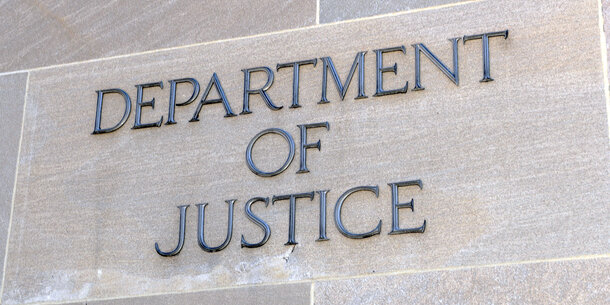Written Testimony Submitted to the Senate Standing Committee on Codes at the Hearing Concerning S. 1553A (Automatic Expungement)
The Brennan Center for Justice at New York University School of Law welcomes the chance to testify in support of S. 1553A, a “clean slate” act for New York.1 Drawing on rigorous empirical research, the Brennan Center’s nonpartisan experts work to raise awareness of the connection between poverty and criminal justice involvement, and advocate for policies that — like S. 1553A — would help break that link. We commend the Committee for holding a hearing on this important legislation and urge the Senate to pass it.
For the moment, New York continues to lag other states in the adoption of so-called “clean slate” laws, which automatically phase out old criminal records with the passage of time. Enacting S. 1553A would, at a stroke, place New York instead near the forefront of this movement, and make the state a leader in providing economic opportunities for people who have interacted with the criminal justice system. The ongoing coronavirus pandemic and related recession make this matter especially urgent. We urge the Senate to act without delay to pass this legislation.
I. Experience with the Criminal Justice System Reduces Earnings for Decades, Creating a System of Perpetual Punishment.
Automatic expungement laws aim to expand economic opportunity for people who have returned to their communities after spending time in prison or being convicted of a crime. That relief is sorely needed. All too often, the promise of a “second chance” after a criminal conviction proves illusory, even in New York, contributing to poverty and economic inequality statewide.
Recent research by the Brennan Center starkly illustrates this problem, showing that in the United States, conviction and imprisonment can impact someone’s ability to earn a living wage for decades. According to our research, people who have spent time in prison earn roughly half as much annually as socioeconomically similar people.2 And this earning reduction does not fade with time. In fact, the earnings of formerly imprisoned people never truly “catch up” to those of people who are otherwise similar to them. Average earnings lag their peers even decades later. Over the course of a career, this earning gap reaches nearly half a million dollars.3
Our research shows that conviction of a crime, even without time in prison, also entails a significant and long-term reduction in earning potential. People with a criminal conviction earn roughly $100,000 less over the course of a career, compared to socioeconomically similar people. Even a relatively minor criminal record appears to reduce earnings. Conviction of a misdemeanor, we found, cut annual earnings by an estimated 16 percent.4 These effects are felt first and most profoundly by those already facing poverty or other challenges.5
The ramifications for New York are also profound. In a recent publication, we estimate that there are roughly 337,400 people in New York alive today who have spent time in prison. Every year, then, reduced earning potential associated with time in prison may reach as high as $1.9 billion, with communities of color disproportionately bearing this burden.6 Unfortunately, data limitations prevented us from estimating the aggregate economic impact of convictions on New Yorkers. But it is likely quite large. According to Governor Andrew Cuomo, in 2016, approximately 2.3 million New Yorkers had “a criminal conviction on their record.”7
Taken together, our research suggests that experience in the criminal justice system — including conviction of a relatively minor offense — places individuals at greater risk of poverty, and imperils the economic wellbeing of entire communities.
Many different aspects of our society combine to create this connection between conviction, imprisonment, and poverty. One contributing factor is undoubtedly the prevalence of criminal record information.8 Criminal records in the United States tend to be both public and permanent.9 They can also make it difficult for people to participate in the essential elements of daily life. Employers may screen out applicants with a criminal record; licensing rules may make people ineligible for entire career paths.10 Worse, these “collateral consequences” continue long after the underlying conviction has faded into the past. As the late NYU Law School professor James Jacobs put it, “[a] criminal record is for life; there is no statute of limitations.”11
II. S.1553A’s Automatic Sealing and Expungement Provisions Would Ease These Burdens and Create Real Second Chances for New Yorkers.
Sealing and expungement laws address these hardships by restricting who can access criminal record information. We were pleased to see the legislature pass a major new sealing law in 2017, permitting New Yorkers to apply to have some types of criminal records sealed.12 Unfortunately, this law appears to be underutilized, with recent reporting suggesting that a vanishingly small portion of eligible New Yorkers have successfully applied to have their records sealed.13 Researchers have documented this “uptake gap” elsewhere, too, indicating that administrative barriers — such as complex paperwork, or the need to hire an attorney — may prevent many eligible people from applying for record sealing.14
- 1553A would solve this problem by fully automating the sealing and expungement process. Under the proposed automatic expungement system, old criminal records would be phased out in two steps. Criminal records would first be “sealed” after either one year (for a misdemeanor) or three years (for a felony) have passed since sentencing. Sealed records would remain accessible to courts and prosecutors, ensuring that law enforcement officials can rely upon them in future criminal cases.15 In many other respects, though, a sealed record would be functionally removed from public view. Most importantly, once a criminal record has been sealed, S. 1553A would permit someone to legally deny the record’s existence in a housing, licensing, or job application — sharply limiting the stigma of a criminal conviction in these competitive markets.16
Next, after five or seven years have passed since sentencing (or release from prison), records would be automatically expunged.17 Expungement limits access to a criminal record even further; an expunged record would become, in most cases, a legal nullity. State actors would be precluded from even confirming the existence of the record, and law enforcement agencies would be required to destroy fingerprints related to the record.18 Notably, though, and as discussed in more depth on the next page, expunged records would remain accessible in some important cases — such as, applications for firearm permits — to protect public safety.
Several states have successfully adopted automatic expungement laws. But S. 1553A would place New York near the forefront of the bipartisan clean slate movement, by making sealing available to more people, and sooner, than most other jurisdictions.19 In Utah, for example, only relatively low-level offenses are eligible for automatic sealing.20 Two neighboring states — Pennsylvania and New Jersey — also provide for automatic sealing, but with significant exclusions. Both also have relatively long, ten-year waiting periods.21 By contrast, S. 1553A reaches all offenses and, especially in the case of misdemeanors, provides prompt relief to people who may urgently need it to find a new job, or a place to live.22
This significant expansion of New York’s sealing laws would go a long way toward reducing the economic consequences of a criminal record. In one recent analysis, University of Michigan law professors J.J. Prescott and Sonja Starr analyzed the impact of Michigan’s pre-2011 law, which permitted people to apply for record sealing after five years.23 They found that people whose records were sealed gained “nearly eight percentage points in their employment rate,” and “an average of $1,111 in quarterly wages.”24 People who benefited from record sealing also had relatively low rates of recidivism.25 Considering that S. 1553A’s provisions would help more people, sooner, its effects could potentially be even more pronounced.26
III. S.1553A’s Expungement Provisions are Also Consistent with Public Safety.
Additionally, S. 1553A contains several important provisions designed to protect public safety. For one, conviction of any new crime would restart the waiting periods for automatic sealing and expungement. Convictions entailing any form of community supervision — i.e., parole — would also be ineligible for sealing or expungement until supervision has ended. Similarly, people convicted of sex offenses would be unable to seal those conviction records for as long as they remain on the sex offender registry. These provisions ensure that automatic sealing and expungement would not permit people to circumvent lawfully imposed sentences.27
Furthermore, even once expunged, criminal records would remain available for some important purposes. For example, an expunged record would be discoverable if someone applied for a law enforcement job or a firearm permit.28 Prosecutors would also be able to draw upon expunged records in some specified cases.29
Lastly, S. 1553A’s “waiting periods” for sealing and expungement appear consistent with our understanding of recidivism. One notable analysis by the New York Department of Corrections and Community Supervision followed people released from prison in 2014 for three years, and concluded that people are most likely to return to prison — if at all — within the first two years after release. Indeed, 84 percent of people who returned to prison within the study period did so within the first twenty-four months.30 This early peak and dramatic drop-off in recidivism parallels national research, which suggests that re-arrest rates peak early and level off after around five years.31 While some people may commit a crime after having a prior record sealed, such incidents should prove relatively rare.
* * * * *
The Brennan Center urges the Legislature to pass S. 1553A and commit to expanding economic opportunities for people who have a criminal record. Providing such “second chances” is in the best interest of all New Yorkers and consistent with public safety. It is also the right thing to do.
Endnotes
-
1
The Brennan Center is a nonpartisan public policy and law institute that focuses on the fundamental issues of democracy and justice, and conducts rigorous research to better understand — and identify policy solutions that will help overcome — the collateral consequences of mass incarceration. The opinions expressed in this testimony are only those of the Brennan Center, and do not necessarily reflect the opinions of NYU School of Law. -
2
Terry-Ann Craigie, Ames Grawert, and Cameron Kimble, Conviction, Imprisonment, and Lost Earnings: How Involvement with the Criminal Justice System Deepens Inequality, Brennan Center for Justice, 2020, 14–15, https://www.brennancenter.org/sites/default/files/2020–09/EconomicImpactReport_pdf.pdf. These conclusions are in line with other research, some of which also documents high unemployment among formerly imprisoned people. See id., 25–26. -
3
Craigie et al., Conviction, Imprisonment, and Lost Earnings, 17–20. -
4
Craigie et al., Conviction, Imprisonment, and Lost Earnings, 14–15, 17. -
5
People who spend time in prison tend to have earned relatively little money even before their incarceration, suggesting that justice-involved people and their families face other socioeconomic hardships. See Bernadette Rabuy and Daniel Kopf, Prisons of Poverty: Uncovering the Pre-Incarceration Incomes of the Imprisoned, Prison Policy Initiative, 2015, https://www.prisonpolicy.org/reports/income.html. -
6
Ames Grawert, Cameron Kimble, and Jackie Fielding, Poverty and Mass Incarceration in New York: An Agenda for Change, Brennan Center for Justice, 2021, 9 https://www.brennancenter.org/our-work/policy-solutions/poverty-and-mass-incarceration-new-york-agenda-change. Note that $1.9 billion is a rough estimate arrived at by extrapolating from national earnings-loss estimates. Actual earnings losses may be smaller or, in fact, even larger. Unfortunately, we do not believe that greater precision is possible given the limits of existing data. See id., 9 n.24. -
7
Gov. Andrew M. Cuomo, “Governor Cuomo Announces First in the Nation Regulation to Prohibit Insurance Companies from Denying Coverage to Businesses Seeking to Hire Formerly Incarcerated New Yorkers,” December 21, 2016, https://www.governor.ny.gov/news/governor-cuomo-announces-first-nation-regulation-prohibit-insurance-companies-denying-coverage. -
8
For a brief discussion of how a criminal record can negatively impact economic wellbeing, see Craigie et al, Conviction, Imprisonment, and Lost Earnings, 13. For a discussion of punitive excess in American society and its philosophical roots, see Jonathan Simon, “Losing our Punitive Civic Religion,” Brennan Center for Justice, April 13, 2021, https://www.brennancenter.org/our-work/analysis-opinion/losing-our-punitive-civic-religion. -
9
James B. Jacobs, The Eternal Criminal Record (Cambridge, MA: Harvard University Press, 2015), 119–24 & nn. (noting other nations that allow criminal record information to become a nullity over time), 190–93 (summarizing the differences between American and European handling of criminal record data). -
10
For a summary of collateral consequences in New York State, see New York State Unified Court System, “Collateral Consequences,” last accessed May 3, 2021, https://www.nycourts.gov/courthelp/Criminal/collateralConsequences.html. -
11
Jacobs, The Eternal Criminal Record, 4–5. -
12
Grawert et al., Poverty and Mass Incarceration in New York, 16–17 (summarizing existing law). Note that this report predates marijuana legalization in New York, which provided for the automatic expungement of marijuana offenses. See Gov. Andrew M. Cuomo, “Governor Cuomo Signs Legislation Legalizing Adult-Use Cannabis,” March 31, 2021, https://www.governor.ny.gov/news/governor-cuomo-signs-legislation-legalizing-adult-use-cannabis. -
13
Aaron Morrison, “Nearly 600,000 New Yorkers Are Eligible to Have Their Records Sealed. Fewer than 1,800 Have Succeeded.,” The Appeal, October 8, 2019, https://theappeal.org/nearly-600000-new-yorkers-are-eligible-to-have-their-records-sealed-fewer-than-1800-of-them-have-succeeded/. -
14
See J. J. Prescott and Sonja B. Starr, “Expungement of Criminal Convictions: An Empirical Study,” Harvard Law Review 133, no. 8 (2020): 2489, https://repository.law.umich.edu/cgi/viewcontent.cgi?article=3167&context=articles (“Of eligible individuals, only 6.5% receive expungements within five years of becoming eligible.”). For an analysis presenting potential reasons for this update gap, see id., 2501–06. -
15
S. 1553A, § 1, 2021–2022 Sess. (N.Y. 2021), https://www.nysenate.gov/legislation/bills/2021/s1553/amendment/a (creating N.Y. Crim. Proc. Law § 160.57(1)). -
16
S. 1553A, § 5 (amending N.Y. Exec. Law § 296.16). -
17
S. 1553A, § 1 (creating N.Y. Crim. Proc. Law § 160.57(2)). -
18
S. 1553A, § 1 (creating N.Y. Crim. Proc. Law § 160.57(3), (4), (6)). -
19
For a discussion of the broad, bipartisan support for clean slate initiatives, see “Why States Are Rushing to Seal Tens of Millions of Old Criminal Records,” The Economist, November 14, 2019, https://www.economist.com/united-states/2019/11/14/why-states-are-rushing-to-seal-tens-of-millions-of-old-criminal-records; see also Jessica Miller, “Utah Lawmakers Pass the ‘Clean Slate’ Bill to Automatically Clear the Criminal Records of People Who Earn an Expungement,” Salt Lake Tribune, March 14, 2019, https://www.sltrib.com/news/2019/03/14/utah-lawmakers-pass-clean/ (noting the unanimous passage of Utah’s clean slate law). -
20
Utah Code Ann. § 77–40–102(5) (LexisNexis 2020) (defining “clean slate eligible case” to include some misdemeanor cases ending in conviction). -
21
18 Pa. Cons. Stat. § 9122.2 (2020) (defining eligible crimes and providing a ten-year waiting period); N.J. Stat. Ann. § 2C:52–5.4 & 2C:52–2(b)–(c) (West 2020) (requiring the state to “develop and implement an automated process” for automatic sealing after a ten-year waiting period, and making certain offenses ineligible, respectively). -
22
While S. 1553A’s waiting period is short compared to some other states, it is not without precedent. See Prescott and Starr, “Expunging Criminal Convictions,” 2482 n.116 (identifying several states that permit applications for sealing in the one-to-five-year range). Indeed, under California’s recently-passed “clean slate” law, starting in July 2022, all convictions ending in probation will be automatically sealed immediately after the term of supervision successfully concludes. Misdemeanor convictions not ending in probation will be sealed after one year. Cal. Penal Code § 1203.425(a)(1)(B)(v) (Deering 2020). -
23
Prescott and Starr, “Expunging Criminal Convictions,” 2481–83 (summarizing relevant law). -
24
Prescott and Starr, “Expunging Criminal Convictions,” 2527–29. Another way to present these findings is that after sealing, “an individual’s odds of being employed . . . increase by a factor of 1.13; their odds of earning at least $100/week . . . increase by a factor of 1.23.” Id., 2467. The authors note that other factors may partially explain their results but, after additional tests, conclude that a causal relationship exists between sealing and the employment gains observed in the data. Id., 2533–41. -
25
Prescott and Starr, “Expunging Criminal Convictions,” 2512–17. -
26
Indeed, drawing on a supplemental analysis, Prescott and Starr reach the same conclusion, predicting that automatic expungement would also increase employment and earnings. Prescott and Starr, “Expunging Criminal Convictions,” 2539–40. -
27
S. 1553A, § 1 (creating N.Y. Crim. Proc. Law § 160.57(1)(b)(iii)–(iv), (2)(b)(iii)–(iv)). Note that some sex offender registration requirements last for a lifetime. N.Y. Corr. Law § 168-h (Consol. 2020). -
28
S. 1553A, § 1 (creating N.Y. Crim. Proc. Law § 160.57(4)(g)–(h)). -
29
See S. 1553A, § 1 (creating N.Y. Crim. Proc. Law § 160.57(4)(b)). -
30
2014 Inmate Releases: Three Year Post-Release Follow-Up, New York State Department of Corrections and Community Supervision, 5, https://doccs.ny.gov/system/files/documents/2021/03/inmate-releases-three-year-out-post-release-follow-up-2014.pdf. -
31
See Mariel Alper, Matthew R. Durose, and Joshua Markman, 2018 Update on Prisoner Recidivism: A 9-Year Follow-Up Period (2005–2014), Bureau of Justice Statistics, 2018, https://www.bjs.gov/index.cfm?ty=pbdetail&iid=6266. For a discussion of research on recidivism rates, see Dana Goldstein, “The Misleading Math of ‘Recidivism,’” The Marshall Project, December 4, 2014, https://www.themarshallproject.org/2014/12/04/the-misleading-math-of-recidivism.


